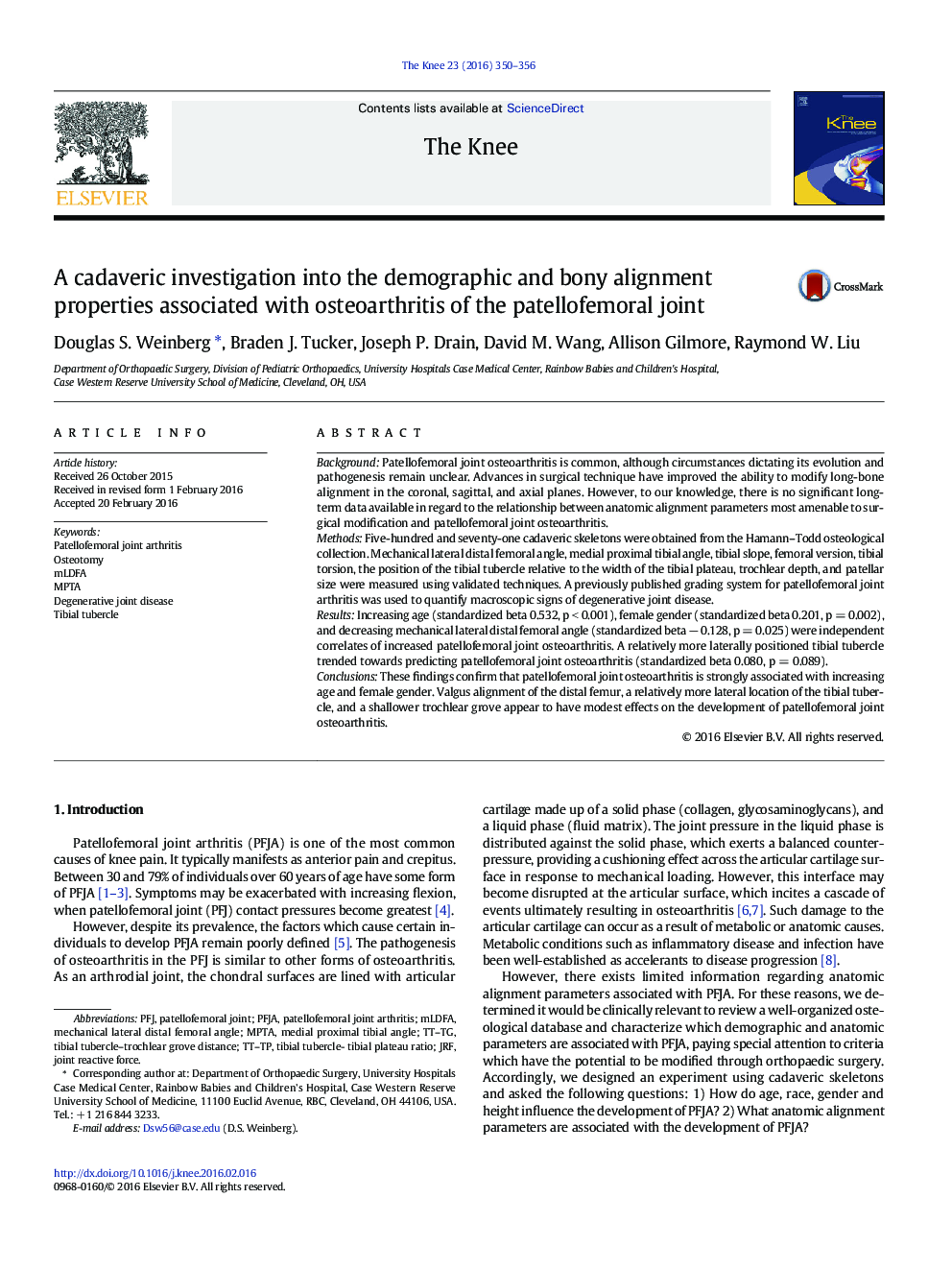| کد مقاله | کد نشریه | سال انتشار | مقاله انگلیسی | نسخه تمام متن |
|---|---|---|---|---|
| 6211103 | 1267205 | 2016 | 7 صفحه PDF | دانلود رایگان |
- Age was the strongest predictor of osteoarthritis in this cadaveric analysis.
- Females had more patellofemoral joint osteoarthritis than males.
- A more valgus alignment of the distal femur was associated with increased patellofemoral joint osteoarthritis.
- More laterally positioned tibial tubercles and more shallow trochlear groves may be associated with the development of patellofemoral osteoarthritis.
- This cadaveric data confirms many of the anecdotal clinical observations made by earlier authors.
BackgroundPatellofemoral joint osteoarthritis is common, although circumstances dictating its evolution and pathogenesis remain unclear. Advances in surgical technique have improved the ability to modify long-bone alignment in the coronal, sagittal, and axial planes. However, to our knowledge, there is no significant long-term data available in regard to the relationship between anatomic alignment parameters most amenable to surgical modification and patellofemoral joint osteoarthritis.MethodsFive-hundred and seventy-one cadaveric skeletons were obtained from the Hamann-Todd osteological collection. Mechanical lateral distal femoral angle, medial proximal tibial angle, tibial slope, femoral version, tibial torsion, the position of the tibial tubercle relative to the width of the tibial plateau, trochlear depth, and patellar size were measured using validated techniques. A previously published grading system for patellofemoral joint arthritis was used to quantify macroscopic signs of degenerative joint disease.ResultsIncreasing age (standardized beta 0.532, p < 0.001), female gender (standardized beta 0.201, p = 0.002), and decreasing mechanical lateral distal femoral angle (standardized beta â 0.128, p = 0.025) were independent correlates of increased patellofemoral joint osteoarthritis. A relatively more laterally positioned tibial tubercle trended towards predicting patellofemoral joint osteoarthritis (standardized beta 0.080, p = 0.089).ConclusionsThese findings confirm that patellofemoral joint osteoarthritis is strongly associated with increasing age and female gender. Valgus alignment of the distal femur, a relatively more lateral location of the tibial tubercle, and a shallower trochlear grove appear to have modest effects on the development of patellofemoral joint osteoarthritis.
Journal: The Knee - Volume 23, Issue 3, June 2016, Pages 350-356
